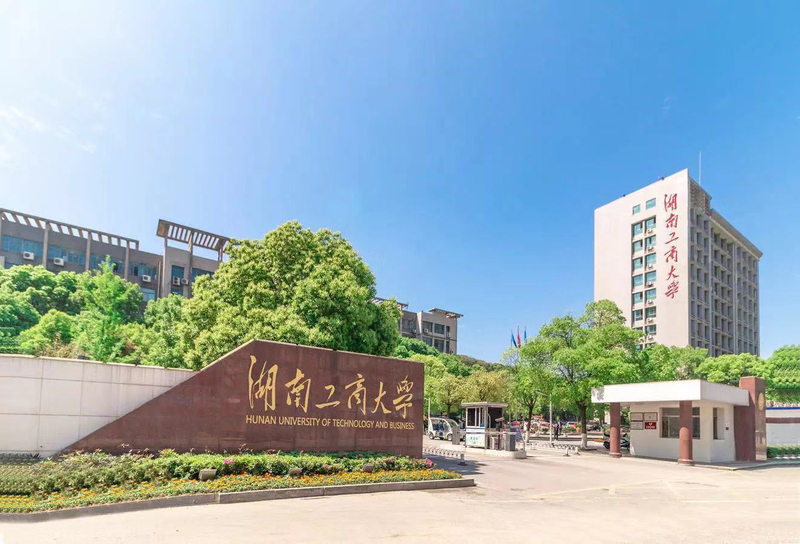[CPPCC Daily] Accelerating the formation of new productive forces with the new generation of information technology as the engine
2023-12-02
Chen Xiaohong, Member of CPPCC and CAE Academician
CPPCC Daily (7th edition, November 30, 2023)
The proposal of "new productive forces" has sent a clear signal of innovation to the whole society, providing us with a more precise direction to promote industrial innovation through technological innovation and build competitive advantages through industrial upgrading. It also provides a guide for us to better implement the new development concept, build a new pattern of development, and promote high-quality development.
In recent years, the new generation information technology system, consisting of big data, artificial intelligence, advanced computing, blockchain, metaverse, and others, along with the distinct productive forces they have formed, has become the most significant variable in today's world development. It has emerged as the core driving force behind a new round of industrial transformation and global economic growth promotion. To accelerate the formation of new productive forces, it is necessary to rely on and make full use of these technologies.
Leveraging "big data" empowers the development of new productive forces. "Whoever controls the data holds the initiative." With the accelerated promotion of industrial digital transformation, the importance of data elements is becoming increasingly prominent. To empower new productive forces, it is crucial to grasp the trend of the recent years in China's big data industry, which has shifted from small-scale and narrow-scoped applications to large-scale and deep-level development. Gathering new data should be regarded as the core driving force to promote the development of the digital economy. It is important to refine new data like refining petroleum and share big data like sharing sunlight. We should guide the moderate aggregation of large-scale data centers, cultivate and strengthen the independent data center industry chain, construct a high-standard technology ecosystem for data element transactions, develop technical standards for data elements, and promote the market-oriented reform of supporting measures for data elements. We should develop high-performance data storage, enhance data integration and analysis capabilities, achieve the integrated analysis of massive data from multiple sources, locations, and formats, break down data silos, and accelerate the "promoting inclusive cloud, big data integration, empowering intelligent transformation" initiative. We should vigorously foster data service providers for data quality assessment, asset evaluation, classification, and security services, build regional collaborative development and complementary advantages in the big data industry, and enhance the level of industrialization of big data.
Strengthening "big computing" unleashes new productive forces. Cloud computing, high-performance computing, and other technologies are now covering all aspects of social life. Computing power has become the core productive force driving technological development. Although it is invisible and intangible like air, it does exist and promotes the intelligence of human life. To unleash new productive forces, it is essential to focus on "big computing" and continuously strengthen the computing industry. We need to make computing power as accessible as water and electricity, flowing into ordinary households. We should vigorously develop domestic computing power, construct regional and even national computing networks, connect heterogeneous computing resources across regions, and build a command platform for computing power scheduling. This will enable controlled scheduling of computing resources and unleash the value of social computing power. We need to overcome the heterogeneity issues of different AI computing platforms, enabling model migration across different heterogeneous platforms. We should promote the integration, migration, and transformation of existing "old, small, and scattered" data centers and their incorporation into new types of data centers. Furthermore, we should establish unified standards and interface specifications for computing power access. We should promote industry standardization and generalization, encourage the development of compatibility-related testing specifications and standards for various products, and achieve interoperability and compatibility among different computing products. Efforts should be made to vigorously research and develop key technologies for energy-saving and consumption reduction in computing infrastructure. We should also construct green data center power supply systems. Through multi-level technological breakthroughs and coordinated management, we can accelerate the development of green computing power.
Building "big models" enhances new productive forces. Currently, artificial intelligence technology has entered the era of big models and has become the focus of global innovation. Many big model technologies possess the capability to handle tasks in multiple scenarios, for various purposes, and across different disciplines. They can be widely applied in numerous fields such as economy, law, and society. To enhance new productive forces, we need to promote the self-reliance and controllability of big model technology stacks. This can be achieved by strengthening our intellectual property layout in key aspects and related technologies of big models. We should also emphasize original technological innovation for big models as well as the construction of software and hardware ecosystems for big models. To tackle the problem of computing power shortage during big model training, we need to promote innovation in distributed computing technology and advance the construction of cloud computing platforms. This will improve the scalability and efficiency of computing power. We need to strengthen risk assessment and prevention of potential risks in the development of artificial intelligence big models. For generative AI services, we should implement inclusive and cautious regulatory measures with classification and hierarchical supervision. Research and development should be conducted on big model security alignment, security assessment technologies, and techniques to enhance the security of big models. The safety of training data should be improved as well. Continuous efforts should be made to enhance the interpretability, reliability, and controllability of big models. Gradually, we aim to achieve auditability, supervision, traceability, and trustworthiness in the development of big models.
Promoting "big convergence" strengthens new productive forces. Industrial intelligence, green development, and integration are the development trends of our era. The convergence of technology, infrastructure, and information has led to rapid advancements in scientific and technological innovation. Promoting the integrated development of computing power, algorithms, computing basis, and computing networks is essential to enhance the efficiency of each component comprehensively. Only through this integration can we forge new advantages for development. To strengthen new productive forces, it is necessary to integrate scattered forces and increase collective intelligence in the field of integrated innovation. We must accelerate breakthroughs in key core technologies in related areas. To strengthen algorithm research and technological breakthroughs, we need to make breakthroughs in a batch of specialized/general core algorithms. We should cultivate a set of algorithm products that are competitive in the market and create a number of internationally leading algorithm application case studies. This will ensure a high-quality supply of algorithms. By relying on the construction of new infrastructure, we can promote the realization of high-speed interconnection of data across all regions, integration and dispatching of applications, as well as full coverage of computing power. This will enable the organic integration of computing power, networks, data, and service resources. Optimizing the industrial ecosystem of "computing systems + applications + services" involves strengthening the coordination of research and development forces among industry, academia, research institutions, and application users. It also requires enhancing collaboration between the upstream and downstream of the industrial chain. By doing so, we can better empower the development of various industries and sectors.
Link: http://dzb.rmzxb.com/rmzxbPaper/pc/con/202311/30/content_53565.html









